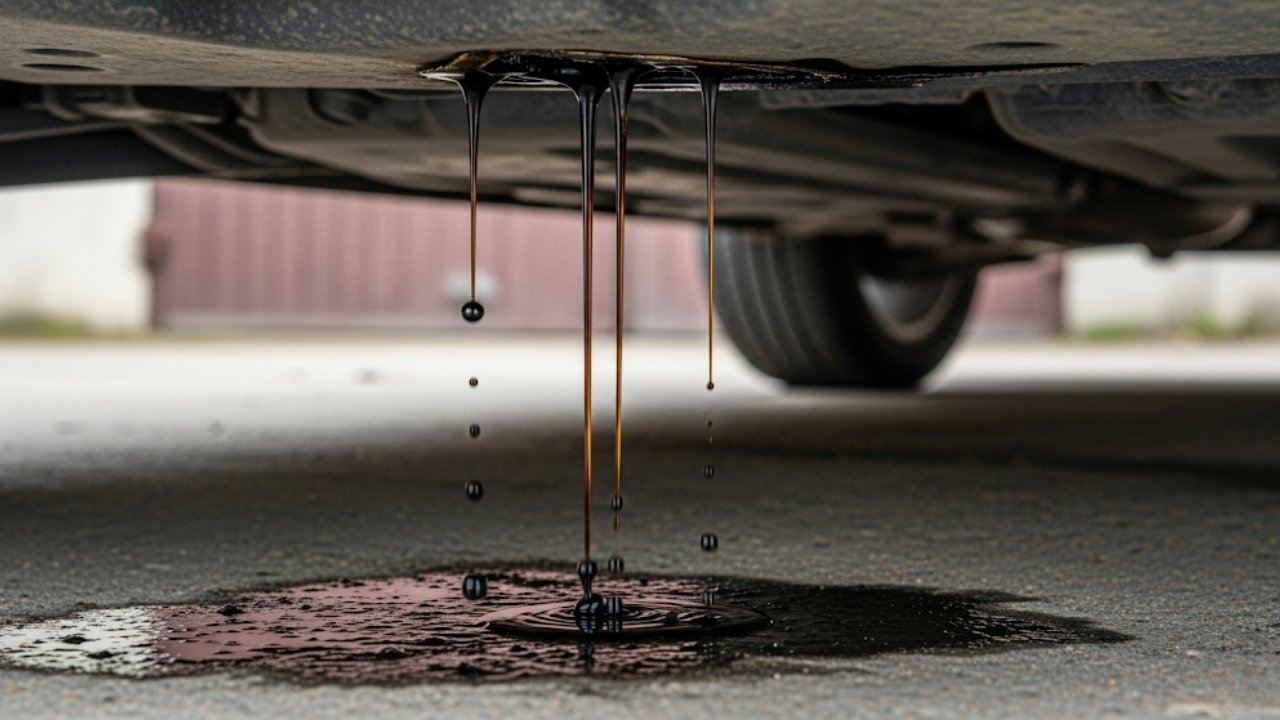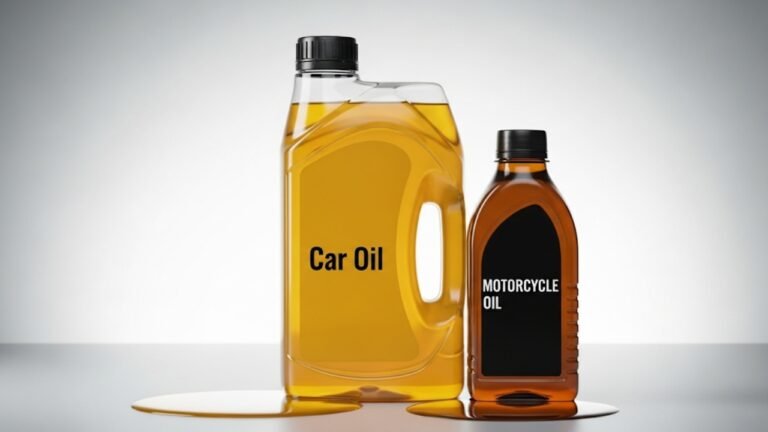Why Are There Drops of Oil Under My Car?

We’ve all been there. You walk out in the morning, coffee in hand, ready to hit the road, and there it is—drops of oil under the car. At first, you think, Maybe it’s nothing. Just water from the AC. But then, that little stain keeps growing. And suddenly, your mind starts racing: Is this going to cost me a fortune? Is my engine in danger?
Let me tell you—those tiny oil spots can whisper secrets your car is too proud to admit out loud. They might be harmless… or a silent scream for help. In this article, we’ll dive deep into what those oil drops mean, why they happen, and what you should do about them—all in a way that feels like advice from a friend, not a lecture from a mechanic.
Chapter 1: What Those Oil Drops Are Trying to Tell You

-
“Hey, my engine seals are getting tired.”
-
“I think my oil pan gasket has sprung a leak.”
-
“That oil filter you installed last time? It’s a bit loose.”
-
Or simply, “Check me, please.”
Here’s the thing: oil doesn’t just leak for fun. It escapes from somewhere. Think of it like a garden hose with pinholes—it only takes a small breach to create a mess.
Let me share something personal. A few years back, my trusty old Honda started marking its territory. Tiny spots at first. Then bigger. I ignored it. I wish I hadn’t. A $30 gasket job turned into a $700 oil pump replacement. Lesson learned.
Signs It’s Engine Oil and Not Something Else
Before we panic, let’s make sure it’s actually oil and not another fluid. Here’s a quick cheat sheet:
| Fluid Type | Color | Texture | Smell |
|---|---|---|---|
| Engine Oil | Amber to dark brown | Slick, greasy | Slightly burnt, oily |
| Transmission Fluid | Red or pink | Slippery, thin | Sweet |
| Coolant | Green, orange, pink | Watery but sticky | Sweet, chemical |
| Water (AC drain) | Clear | Thin, dries quickly | Odorless |
So if what you see is brown, thick, and a bit sticky, it’s most likely engine oil.
Chapter 2: Top Causes Behind Drops of Oil Under Your Car
Now let’s get to the juicy stuff. What actually causes drops of oil under the car?
Here are the most common culprits, explained in plain English:
1. Worn or Damaged Oil Pan Gasket
The oil pan is like your engine’s bathtub. It holds the oil while the engine rests. If the gasket—the seal between the engine and the pan—goes bad, you’ll see oil puddles.
-
Usually happens over time
-
Common in older cars or high mileage engines
-
Easy fix if caught early
2. Loose or Improperly Fitted Oil Filter
This one hits close to home. A friend of mine once changed his oil in his garage and didn’t tighten the filter enough. Next morning? A puddle the size of a pizza box.
A loose filter allows oil to leak out when the engine’s running. And it doesn’t take long for that to become dangerous.
3. Worn Valve Cover Gasket
This sits at the top of your engine. If it wears out, oil can drip down the engine block and end up on the ground.
-
You might also smell burning oil
-
Usually causes a slow drip
-
Needs replacing every 75,000–100,000 miles
4. Cracked Engine Block or Cylinder Head
This is rare, but serious. It’s the kind of leak that usually follows overheating or an accident. If you see large puddles and your car is running hot, don’t drive it. Get it towed.
5. Oil Drain Plug Not Sealed Properly
After an oil change, if the plug isn’t tightened right or the washer wasn’t replaced, oil can sneak out overnight.
Bullet List Recap:
-
Oil pan gasket = old age or road debris
-
Valve cover gasket = time and heat
-
Oil filter = incorrect installation
-
Drain plug = overlooked during oil change
-
Engine damage = overheating or impact
Chapter 3: How Serious Is It When Oil Drips?
Okay, so you’ve got drops of oil under your car. How worried should you be?
Think of it this way: a slow drip is like a paper cut. Annoying, but not life-threatening—unless you ignore it and let it get infected. A fast leak, on the other hand, is like bleeding from the wrist. You must act fast.
Let’s categorize:
| Leak Severity | Symptoms | What to Do |
|---|---|---|
| Minor drip | A few spots after parking overnight | Monitor it. Check oil weekly. |
| Moderate leak | Several drops daily, oil light flickers | Get it checked within a week. |
| Severe leak | Puddle forms in hours, smoke, burning smell | Don’t drive. Call a tow. |
Driving with low oil is like running a marathon with no water. Your engine will heat up, wear out, and potentially seize. And engine repairs? They’re no joke. We’re talking thousands of dollars.
Chapter 4: Diagnosing the Leak at Home (No Wrench Required)
Before you take it to the shop, there’s a bit of detective work you can do yourself.
Here’s a simple step-by-step guide:
-
Park on a Clean Surface
Use cardboard or an old white sheet under your engine overnight. -
Check the Color of the Leak
If it’s golden or brown, you’re likely dealing with engine oil. -
Pop the Hood and Look Around
Shine a flashlight around the valve cover, oil pan, and filter. -
Smell the Oil
If it smells burnt, it may be dripping onto hot parts—another clue. -
Check the Dipstick
Low oil? The leak might be more serious than you thought.
Real talk: My cousin once used flour around the suspected area of his leak. When the oil seeped out, it left a clear trail through the white dust. DIY at its finest.
Chapter 5: Can You Drive With an Oil Leak?
Short answer? It depends.
Long answer? Well, it’s a bit like asking if you can walk with a stone in your shoe. Sure, you can. But the more you do it, the more damage you cause.
Here’s what you should consider:
-
Is the oil level dropping quickly?
If yes, don’t risk it. Your engine needs that oil for survival. -
Is there smoke or smell?
Burning oil can ignite. That’s a fire hazard. -
Are there performance issues?
Rough idling, knocking sounds, or overheating? Don’t drive it.
Chapter 6: Fixing the Leak—From DIY to Mechanic Help
So, you’ve found drops of oil under your car and figured out what might be causing them. The next step? Fixing it. Now, let’s be real—some leaks are a simple driveway fix, while others need a seasoned mechanic’s touch.
Quick DIY Fixes (If You’re Feeling Handy)
If the leak is minor and you’re comfortable getting your hands dirty, try these:
-
Tighten the oil filter or drain plug
Sometimes, that’s all it takes. A loose filter can leak right after an oil change. -
Replace the crush washer
This little ring seals the drain plug. It can cost as little as $2. -
Add a stop-leak product
Not a long-term fix, but it can temporarily reduce leaks from rubber gaskets.
Just remember: DIY fixes are like band-aids. They stop the bleeding, but don’t always heal the wound.
Repairs Best Left to the Pros
Some problems need more than elbow grease:
-
Oil pan gasket replacement: $150–$400
-
Valve cover gasket replacement: $100–$300
-
Oil pump repairs: $300–$1,200
-
Cracked engine repair: Starts at $1,500 and goes up fast
The cost varies based on your car make, engine size, and local labor rates. A trusted local mechanic can give you an honest quote. Don’t wait too long. A small leak today can lead to catastrophic engine failure tomorrow.
Chapter 7: How to Prevent Oil Leaks Like a Pro
What’s better than fixing a leak? Never having one in the first place. With just a little love and attention, your car will thank you with dry, clean parking spots.
Here’s what works:
✅ Regular Oil Changes
Old oil breaks down, eats at seals, and causes leaks. Stick to your car’s maintenance schedule. And always use the right oil grade.
✅ Use High-Quality Gaskets and Filters
Cheap parts wear out fast. Spend a few bucks more now to save hundreds later.
✅ Check Under the Hood Monthly
Look for wet spots, oily smells, or grime buildup. If it looks sketchy, it probably is.
✅ Clean the Engine Occasionally
A clean engine helps you spot leaks early. You can even use engine degreaser sprays or have it professionally cleaned.
✅ Park in the Same Spot at Home
This sounds odd, but trust me—it’s easier to notice leaks if you always park in the same place. You’ll know instantly if something’s wrong.
Chapter 8: When Oil Leaks Get Dangerous
Sometimes it’s not just about drops of oil under the car—it’s about what happens next.
Fire Hazard
If oil lands on a hot exhaust pipe or manifold, it can ignite. This isn’t just theoretical—I once saw a neighbor’s old Corolla go up in smoke. A $5 gasket could’ve saved that car.
Slippery Driveways and Roads
Oil leaks create hazardous slicks, especially in your driveway or garage. Bad for you. Worse for pets or kids playing nearby.
⚠️ Engine Wear
Oil is your engine’s lifeblood. Without it, parts grind together, causing internal damage. No oil = no lubrication = metal-on-metal = engine death.
FAQs: All Your Oil Leak Questions Answered
❓1. How long can I drive with drops of oil under my car?
If it’s just a couple of drops and your oil level is fine, you can likely drive short distances. But you must monitor it daily and get it checked soon.
❓2. Are oil leaks common in older cars?
Yes. Older engines develop weak gaskets and seals. That’s normal with age. Think of it as your car asking for a little more attention.
❓3. Can oil leaks fix themselves?
Sadly, no. A leak won’t magically heal. In fact, it will usually get worse over time.
❓4. Does synthetic oil cause more leaks?
Not really. That’s a myth. Synthetic oil can expose existing leaks more clearly because it flows better. But it doesn’t cause them.
❓5. How much oil leaking is considered “too much”?
If you’re losing more than a few ounces overnight or the oil light comes on, that’s too much. Don’t drive until it’s inspected.
❓6. What if the leak only happens after driving?
That’s common. As the engine warms up, parts expand and pressure builds. That can push oil through small gaps.
❓7. Should I always fix a small oil leak?
Yes. Small leaks can grow, create damage, and lower your oil level over time. Fix it now, save later.
❓8. What if the leak is red or green instead of brown?
Then it’s likely not engine oil. You might be dealing with transmission fluid or coolant—both of which need attention, too.
Final Thoughts: From Small Drops to Big Problems—Don’t Ignore the Signs
Look, your car’s not trying to ruin your day when it leaves drops of oil under the car. It’s trying to communicate. Think of those drops as breadcrumbs leading you to an important truth: something needs fixing.
Cars are loyal if you treat them well. Don’t ignore them when they’re quietly asking for help.
So next time you see that dark little puddle on your driveway, don’t shrug it off. Investigate it. Understand it. Act on it.
And if you ever feel unsure—get it checked. Peace of mind is always worth the price of a mechanic’s glance.






